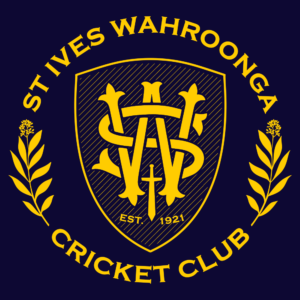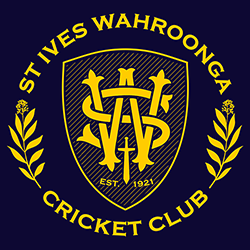40 Teams, 7 Premierships
The association suspended the competition between the years of 1941 and 1946 due to the Second World War. When the competition was resumed for the 1946/47 season, many clubs had difficulty in re-forming. The St Ives Cricket Club was able to field 4 teams in this season, two in A1 grade and two in C1 grade. During this era the Rofe Shield was virtually monopolised by the St Ives and Thornleigh clubs. Both clubs appeared no less than 10 times in the A Grade finals with St Ives recording four victories.
It was during these 16 seasons that a number of significant and not so significant changes were made in the Association.
At the Hornsby District Cricket Association Annual General Meeting held on 26 July 1948 a motion was passed by the St Ives Club seeking to change the name of the Association to the Hornsby Ku-ring-gai Cricket Association. It was believed that the new name would enable those clubs based in the Ku-ring-gai area to be able to present a better case to the Ku-ring-gai Council for new grounds. The motion was successful.
From 1946/47, for a period of twenty years, the Association utilised a system of Semi-finals [usually limited to three days] and Finals [usually played to an outright result] to determine the champion team. Some of these games saw massive scores and even greater total match figures.
In an A Grade Semi-final between St Ives and Glenorie played at Bannockburn Oval, St Ives scored 657 which became the highest innings total recorded since 1903 in Association cricket affiliated with the N.S.W. Junior Cricket Union. Of these, Jack Barrett scored 220 runs, which still stands today as the highest score by any St Ives batsman in any grade. Glenorie made a ‘paltry’ 351 in reply.
In 1951/52 a new rule was introduced whereby any minor premier, if defeated in it’s Semi-final, still had the right to play the winner of the Final in a Grand Final. Fortunately, this rule only lasted for one season. However, as a result of the 1951/52 rule, that year saw five Finals and four Grand Finals being played to outright conclusions. This provided for some massive scores and likewise, some very long matches.
The 1951/52 Grand Final between St Ives and West Pennant Hills played at Hassell Park did not commence until 19 April 1952 and lasted for ten Saturdays before St Ives eventually emerged victorious on 21 June 1952. Ironically, such a long game finished on the shortest day of the year. Unfortunately, details of the game have long since been lost.
In 1952/53 the Association started to grade teams on their strength. Most competitions throughout the 1950s teams were placed into either A, B or C Grades with the bottom four teams in each grade at the conclusion of twelve rounds or so, then playing off for the Reserve Grade honours.
Despite the five year lapse in competition due to the Second World War, some of those players who graced the field in the 1930s returned to continue their careers. These players included E Creese, E Bartley, A Knight, W Reynallt, H Wall, the Badger brothers and the Maunder family. Some of these players also became Association Office Bearers. It is not known what Club positions these players held as records from that time are not to hand, but it is safe to assume that that those players who held Association positions also at some time held Club positions and aided in the future direction of St Ives Cricket Club.
During this period there were a number of players, where records do exist, who served the Club with distinction, both on and off the field.
W H [Bill] Reynallt was Senior Vice-President of the Association for six years from 1951/52 and was then elected President of the Association in 1957/58 and 1958/59. Bill is reputed to have played for over thirty years. Apparently, Bill played in the very first season of the Hornsby Cricket Association in 1926/27. He won the Association’s A Grade bowling award in three consecutive years, 1950/51, 1951/52 and 1952/53. His total of 71 wickets in the 1951/52 season is the highest number of wickets ever taken by a bowler in A Grade playing on malthoid pitches. In this post-war period, it is known that Bill took a total of 352 wickets at an average of about 12.0. [It should be noted that these figures are performances in only eight of his seasons, being those in which he gained acknowledgment in the Association’s Annual Report.]
Another leading figure of this period was Clive Menck. Clive was captain of the St Ives A Grade team of the 1950s through to the early 1960s. He was a member of the Association’s Executive for seven years, three of them serving as Senior Vice-President from 1959 to 1962. On the field, Clive scored 3012 runs at an average of 44.0 [figures complete for seven seasons only], including 656 runs at 59.7 in 1953/54 and 548 runs at 54.8 in 1955/56. Clive was made a Life-Member of the Association in 1962 and the same honour was bestowed on Bill Reynallt in 1964.
Some other leading players of the post-war era included:
R Veitch: who was regarded as on of the better players in the Hornsby District Cricket Association in the late 1920s.
F Horsey: a hard hitting top order batsman who hit 1691 runs at an average of around 36 in three seasons from 1929 to 1932, all in A Grade.
G Knight: who took 65 wickets at 8.3 in 1926/27 and 41 wickets at 7.5 in B Grade the following season.
A Taylor: in 1928/29 scored 633 runs at 24.03 and took 37 wickets at 12.8 playing B Grade to become one of the Club’s first true all-rounders.
R Reilly: in three seasons, 1930 to 1933, took 153 wickets at around 8.10. His 1930/31 bowling average of 5.34, taking 60 wickets along the way, still stands today as the best ever B Grade bowling average in the Hornsby District Cricket Association.
E Bartley: who in 1931/32 scored 537 runs at 33.5 in A Grade. In the seasons 1934/35, 1935/36 and 1936/37 he took a total of 143 wickets at an average of around 11.0 and in 1940/41 took another 40 wickets at 11.3, all in A Grade.
J Murray: in the seasons 1928/29, 1933/34, 1935/36 and 1936/37 hit 1520 runs at an average of around 27.0, mainly playing in A Grade.
A Knight: who in the seasons 1937/38, 1938/1939 and 1939/40 took 118 wickets at an average of around 12.1. In 1937/38 he combined his 30 wickets at 9.9 with 405 runs at a average of 20.20.
One other person who should be noted here was Jim Maunder who, after the war, continued his association with cricket in the St Ives area and continued as Patron of the Association until 1948/49.



